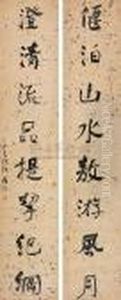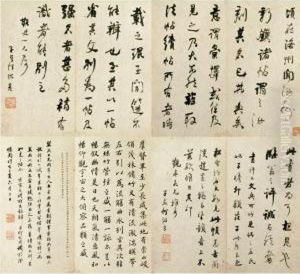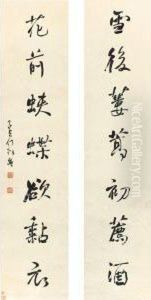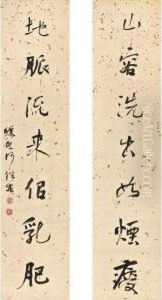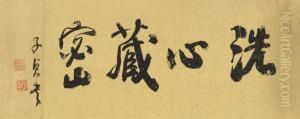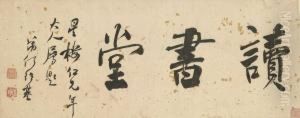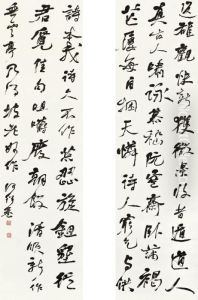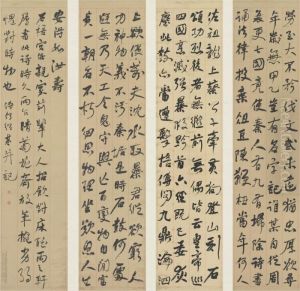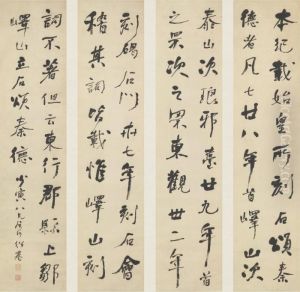He Shaoji Paintings
He Shaoji, a prominent figure in the Qing Dynasty's scholarly and cultural circles, was not only an accomplished calligrapher but also a poet and a statesman deeply involved in the intellectual and political currents of his time. Born into an era marked by significant social and political upheaval, He Shaoji's life and work were profoundly influenced by the challenges and transformations of 19th-century China.
He Shaoji was born in Changsha, Hunan province, into a family with a rich scholarly tradition. This background provided him with access to a vast array of classical texts and the leisure to pursue calligraphy, for which he showed prodigious talent from an early age. His calligraphy was deeply rooted in the traditions of the past, particularly the styles of the Jin and Tang dynasties, yet he was not averse to innovation and experimentation. This blend of reverence for tradition and openness to new influences characterised much of his work and thought.
Throughout his life, He Shaoji actively engaged with the intellectual debates of his time, particularly those concerning the reform and strengthening of the Qing state. In the face of internal challenges and the looming threat of Western imperialism, he advocated for a series of reforms in education, administration, and military affairs, drawing on both Chinese and Western ideas. Despite his contributions to political thought and his involvement in several reform initiatives, he often found himself at odds with the conservative factions within the Qing government, which limited his ability to effect significant change.
In addition to his political and intellectual pursuits, He Shaoji's calligraphy continued to flourish. He was especially renowned for his running script and cursive script, which were admired for their fluidity and expressive power. His works were sought after by collectors and fellow scholars, and he played a significant role in the revival of calligraphy as a major art form in Qing China.
He Shaoji's later years were marked by disillusionment with the political environment and a retreat into scholarly and artistic life. Despite the setbacks in his reformist efforts, he remained a respected figure among his contemporaries for his integrity, scholarship, and artistic achievement. His legacy endures in the fields of Chinese calligraphy and intellectual history, where his life and work continue to be studied and admired.
